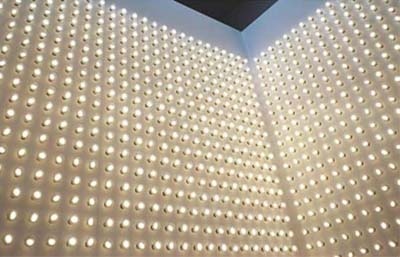 Carsten Höller: "Light corner", 2001 The uniqueness of a work of art A homage to Marcel Duchamp and Richard Hamilton The Boijmans Van Beuningen Museum invited Sarat Maharaj and Ecke Bonk to comment on the work of Marcel Duchamp and Richard Hamilton. From various "islands" these guest-curators evaluate their views on the work of the two surrealists. An exhibition in the form of a laboratory for speculating on the meaning of art and artworks, the role of art education and even on the museum's role. Duchamp and Hamilton Like Duchamp, Hamilton employs means which go farther than the borders of art. Duchamp's chief interest was more in ideas than in tangible results, which he deemed "too retinal". What remained dreams for him speedily became reality for younger artists like Richard Hamilton, who turned to completely new techniques like computers. The conceptual and visual experiments performed in the arts of the twentieth century are of immense interest to scholars and philosophers. Sarat Maharaj Sarat Maharaj, who comes from India, teaches modern art theory at the Goldsmith College in London. When he was still a boy his family emigrated to South Africa. Hampered and frustrated by apartheid laws, in the early eighties he sought political asylum in Great Britain, where he became a seminal theorist in the field of contemporary art. The influence of these three cultures on Sarat Maharaj recalls Duchamp's and Hamilton's transgression of the borders of art in their work. He is currently on Okwui Enwezor's Dokumenta XI team. Held every five years in the German city of Kassel, the event opens this June. Ecke Bonk Researcher and typographer Ecke Bonk is influenced by Marcel Duchamp in his work on information aesthetics. He recently embarked on a Marcel Duchamp Database Intitiative which he hopes will open up the French artists' world of ideas to many more people. Ecke Bonk worked as an advisor to NASA in Houston on techniques for visualising space-shuttle missions. Unlike previous guest-curators, Maharaj and Bonk will make little or no use of the authentic objects in the Boijmans Van Beuningen Museum's collection. Due to the growing influence of technology, more and more museums are taking to the digital highway in order to retrieve and combine objects - by adding scholarly information for example. To a growing extent our acquaintance with art is mediated by reproductions. Is that so very bad, is the question asked by many art theorists and artists, including Marcel Duchamp. It's for you to answer. Doubts and confusion as a positive concept Confusion and doubt are important themes in Carsten Höller's work. They are states of mind we would rather not experience. We often associate them with unease and negative concepts. In "Light Corner" the artists presents confusion and doubt as a question whose answer is found in the fact that the visitor sheds his feelings of unease and succumbs to the experience. This experience, the object and the space are essential components. "Light Corner" is an installation which has an extremely drastic effect on the viewer's physical experience. Installed in a corner of the monumental Bodon gallery, the work consists of two walls studded with thousands of electric light bulbs which flash on and off at a frequency of 7.8 Hertz, a frequency that is synchronous with brain activity. Even with your eyes closed, "Light Corner" triggers hallucinations, visions of colour and a trance-like state of consciousness. Ausstellungsdauer: 24.2. - 21.4.2002 Oeffnungszeiten: Di-Sa 10 - 17 Uhr So und Feiertage 11 - 17 Uhr The Boijmans Van Beuningen Museum Museumpark 18-20 NL-3015 CX Rotterdam Telefon +31 10 441 94 71 info@boijmans.rotterdam.nl www.boijmans.nl |